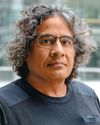
The Lok Sabha elections marked the first major political exercise in Jammu and Kashmir after the abrogation of Article 370 and the reorganisation of the state into two Union territories. The elections got over with the sixth phase of polling on May 25. In Kashmir, the turnout went up to 58 per cent, surpassing the previous highest of 49 per cent in 2014.
“It is the highest turnout for these five constituencies in the last 40 years,” said chief electoral officer P.K. Pole. It marks the end of the election boycott in Kashmir since the eruption of militancy in the late 1980s, paving the way for greater participation of people and separatist groups in the assembly elections later this year.
The three constituencies in Kashmir—Srinagar, Baramulla and Anantnag-Rajouri—saw a record turnout. Srinagar, known for poll boycotts, recorded 38 per cent, the highest in 25 years. In Baramulla, 59 per cent of voters cast their ballots, beating 46.65 per cent in 1996.
In 2019, when Rajouri and Poonch were not part of the Anantnag Lok Sabha constituency, voter participation stood at a mere 8.9 per cent. The Delimitation Commission expanded the constituency’s boundaries across the Pir Panjal to include Jammu’s Rajouri and Poonch, in 2022. These areas are largely inhabited by the Pahari community, tribal Gujjars and Bakerwals. On May 25, voter turnout here climbed up to 54.3 per cent. The surge in turnout can be attributed to several factors. There has been a political void because of the absence of a representative government following the collapse of the PDP-BJP alliance in June 2018. Second, there is a strong feeling of disempowerment among the people following the revocation of Article 370. Finally, the influence of separatist groups advocating for election boycott has waned.
This story is from the {{IssueName}} edition of {{MagazineName}}.
Start your 7-day Magzter GOLD free trial to access thousands of curated premium stories, and 9,000+ magazines and newspapers.
Already a subscriber ? Sign In
This story is from the {{IssueName}} edition of {{MagazineName}}.
Start your 7-day Magzter GOLD free trial to access thousands of curated premium stories, and 9,000+ magazines and newspapers.
Already a subscriber? Sign In

Hat-Trick Or Has-Beens?
India look to win their third straight Test series in Australia, but ageing superstars and recent humiliation at home have cast a shadow on their hopes

Constipation Can Put Your Heart At Risk
PEOPLE WITH CONSTIPATION have an increased risk of major cardiac events, including heart attack, stroke and heart failure, especially if they also have high blood pressure, finds an international study published in the American Journal of Physiology-Heart and Circulatory Physiology.

Too Much Sitting Can Accelerate Ageing
SITTING FOR EXTENDED PERIODS can harm the heart and accelerate ageing, even if you are young and get the minimum recommended amount of daily exercise, according to a US study published in the journal PLOS One.

Efficiency and innovation
As health care evolves, professionals must employ innovative methods to refine their skills

Level up
Only 30 per cent of needy patients are able to undergo transplant in India; we need more dedicated transplant centres

HOPE STEMS FROM A CELL
While stem cell therapies have shown success in treating blood disorders, orthopaedic ailments, autoimmune diseases and eye issues, there is hope that they can one day treat patients with heart disease, blindness, Parkinson's, HIV, diabetes and spinal cord injuries

Mind matters
Your mindset can limit or expand your physical ability

Cutting edge
Would you go under the knife if a robot was the one holding it? Or would you say, \"No way, I need a human touch\"? You might have to decide soon because a robot that can imitate skilled human surgeons is already here.

The smallest cut
Minimally invasive surgeries have a bright future, with virtual reality and 3D procedures offering greater precision and AI on the horizon

Signalling a revolution
Canadian scientist and entrepreneur Sachdev Sidhu is focused on bringing cutting-edge antibody engineering to his country of origin